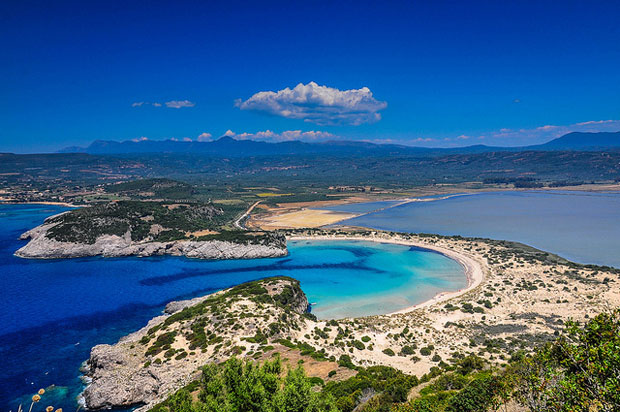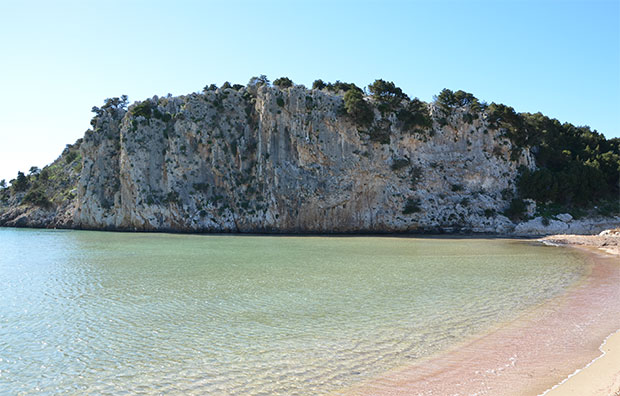
(photo by: vathis)
Voidokilia Beach is possibly the most renowned beach in Messenia and one of the most exquisite beaches in whole Greece! The beach took its name from the word “Voufras”, which means “where the oxen live”. Voidokilia is also referred as Vouvota (Oxen’s Belly) in an ancient inscription. Another obvious reason for the name of the beach is the great curvature of the bay which resembles the belly of an ox.
Every special beach hides an interesting story. In the case of Voidokilia, the beach surrounds a natural little bay, with white fine sand spread from edge to edge of the large coast. As you lie on the beach, you can see Paliokastro on your left and. On your right, on the other side of the beach, you can stare at the vaulted tomb which stands up on the hill. This tomb is said to belong to Thrasymedes, Nestor’s son. Low vegetation bounds the bay and the sand conceals an abundance of gorgeous shells – it only takes for you to dip your hand in the sand!
The beach is as remote as necessary, in order to remain “authentic” and intact by civilization! It is part of the Natura 2000 protected area. There is no organized activity in the area. However, in August the place is swamped by hundreds of visitors who come to admire the land and enjoy the clear waters and the fascinating scenery. Free camping is not allowed, as the region’s significant biodiversity needs to be preserved.

(photo by: Poulopoulos Ioannis)
To access Voidokilia Beach, there is a pathway beneath Paliokastro, beginning at the end of Divari Beach. You may leave your car there and follow the route indicated by the street signs. The easiest way to access the beach is through Petroxori. While you are on the main road Pylos-Gargaliana, you should turn left at the sign for Petroxori-Voidokilia. After a pleasant drive under the shade of the evergreen, perennial olive trees, you will find a little convenience store in the end of the driveway. There, you should take a left turn and continue straight on the dirt road which leads to the beach. The road every now and then becomes quite narrow and requires attention, especially during the busy summer months.
The beauty of the beach is the ultimate payback for your visit! You should really let your body get lost among the sand dunes and your eyes wander in the beautiful images that the scenery ungrudgingly offers you!
Some more mythological facts: According to the Homeric Tradition, the son of Odysseus, Telemachus, arrived by ship at the beach of Voidokoilia. Goddess Athena was in Telemachus’ entourage, disguised as a mentor. There, they attended the grand ritual sacrifice to Poseidon. The details of this ceremony demonstrate the power and prosperity of the city of Pylos among the other Mycenaean centres. There were nine guilds with five hundred men in each, and there were nine bulls to each guild. Each guild offered their bulls for sacrifice. More than 4.500 people with Nestor and his offspring among them were gathered on the sea shore of Voidokoilia.
